City of Fes, Morocco: Cultural Center of Morocco
Mayor of Fes, Abdelhamid Chabat
Firstly, Fes isn’t any city to us. It is 1,200 years old. But it isn’t a city in ruins, it isn’t a silent museum; it is a lively museum, with an ancient yet still inhabited medina, active socially, economically, commercially, and is still producing traditional craft work.
Interview with Abdelhamid Chabat, Mayor of Fes
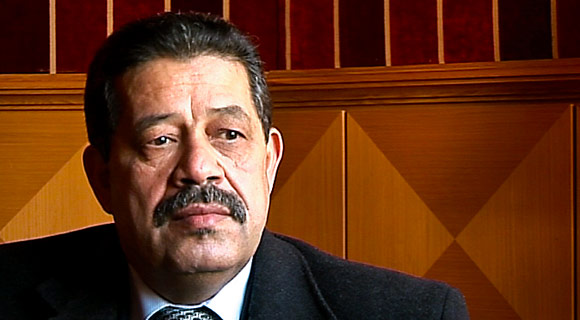
In your opinion, what is the impact of the new Plan 2020 on the region of Fes in the field of tourism?
The city of Fes is a city for art and knowledge. It offers a very good quality of life. Investment opportunities are very numerous due to the economic and cultural potential of Fes, Morocco’s spiritual capital. The University of Al Qarawiyyin in Fes is the oldest university in the world and is still operating. Fes is a must-see city!
Firstly, Fes isn’t any city to us. It is 1,200 years old. But it isn’t a city in ruins, it isn’t a silent museum; it is a lively museum, with an ancient yet still inhabited medina, active socially, economically, commercially, and is still producing traditional craft work.
Broadly speaking, how is investment evolving in the region, and what is your strategy?
To answer that question, we need to take a look back at the work we accomplished during our first mandate, 2003-2009. Since 2003, all actors of the city and all local mayors have been working on bringing Fes up to speed in terms of urban management, basic facilities, creating a better environment for investment. Both visitors and inhabitants have noticed an important and very positive change in the city of Fes, which helped investment evolve and live through the world-wide economic crisis.
Investment-wise, what are Fes’ advantages and what are its drawbacks?
Firstly, Fes isn’t any city to us. It is 1,200 years old. But it isn’t a city in ruins, it isn’t a silent museum; it is a lively museum, with an ancient yet still inhabited medina, active socially, economically, commercially, and is still producing traditional craft work. It is open to the world, and each visitor that discovers it feels something special. It is a mix of different cultures: Arab, Amazigh, Eastern, Mediterranean, Andalusian, African. It is also the city of Al Qarawiyyin, known as the oldest university in the world. 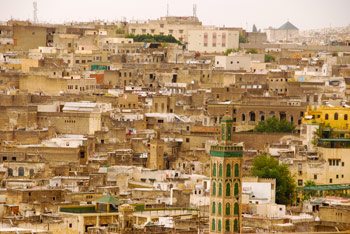
Can you tell us more about this university?
It was founded 1,151 years ago by a woman, a very surprising case for the time! Her own sister founded the University of Al Andalus, Al Qarawiyyin’s sister. Al Qarawiyyin had an immense influence on the world and it would be hard to name all the great scholars that lived, studied and taught at this university. Among the most famous ones are Ibn Al-Khatib, Averroes, Avempace, Maimonides – one of the greatest physicians and reformers of Judaism, the Pope Sylvester II…
Given the tensions of today’s world, it is hard to believe that there was a time where a Moroccan university counted a pope as well as great Muslim scholars amongst its students. We are extremely attached to this and we know it will never change. It is what we call the “Spirit of Fes”. The university is open to the public: visitors can visit the central mosque as well as the madrasas [schools]. They can also visit students’ accomodation. Students were taken care of by the city’s inhabitants and well-integrated. A lot of them spent the rest of their lives here.
Back to the 21st century: what do you think represents the city of Fes? It has a prestigious past. How does it take advantage of it in the present, and how does it aim to be in the future?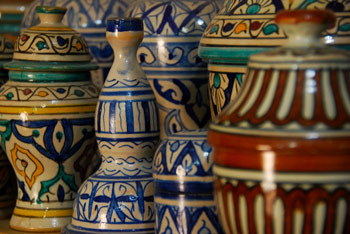
If we talk so much about the past, it is because we want to cast some light on the future. You know that Fes is a listed World Heritage city. It is an honour to share it with humanity, but a burden at the same time. Preserving Fes is a huge responsibility, as well as preserving the “Spirit of Fes”.
All our actions conform with the Spirit of Fes. We don’t aim at becoming like other tourist destinations in the world: our medina wouldn’t target a massive flow of tourists. We are promoting a specific sector of tourism, namely cultural tourism. People can come and take a look at the place where people like Averroes and Maimonides lived.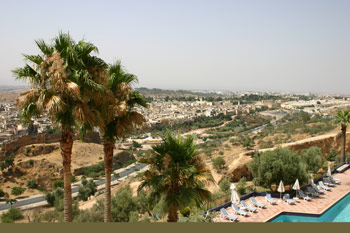
What are the broad lines of your promotion campaign? Do you target specific regions or people?
Not really. The kind of tourists that visit Fes first ask to see the library of Fes, not some night club. They are looking for something specific. Tourism agencies send the other tourists to other destinations; Agadir for example.
What are your challenges in the economic sector, and what sectors attract the most investment?
Our biggest challenge is employment. We have a young population, therefore we are focusing on education. Fes’ development should benefit the youth. They are an essential part of the development process. We want to attract a maximum number of good schools and training centers in order for our young population to be able to respond to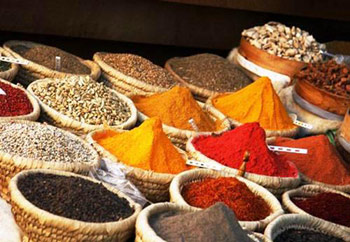 opportunities created by investors.
opportunities created by investors.
There are more than 60,000 university students in Fes. Fes experiences a high demand from Subsaharan African students, partly because of the prestige of a great African figure that lived in Fes, Ahmad al-Tijani. The Tijaniyya Sufi order has more than 3 million members all around the world. To them, visiting al-Tijani’s grave is like a pilgrimage. You cannot visit the medina without catching sight of members of this order. They are very appreciated by us.
What is your vision, your dream for Fes’ future? What are its big projects?
First, all our projects must be carried out in a developmentally-sustainable manner. One of our biggest projects is the Green City and its gulf that will open soon. There is also the botanical garden, the bird garden, where a lot of hotels are being built, as well as a tennis academy. They are all part of the “Oued Fes” project, within the framework of the Regional Plan for Tourism Development. 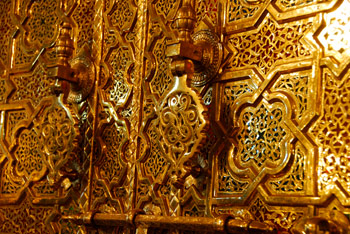
The “Oued Fes” project aims at creating a nice, eco-friendly environment. A key need of this project is an increase in the number of hotel beds available, which is quite problematic at the moment. We also have plans of building: a cultural complex with an important library, an opera, a Modern Art Academy and an artists’ residence, as well as community centers.
A private project is under way right in the middle of the city, the “Fes City Center”: an 8 hectares park, high-standing housing, a congressional palace, a hotel, and the new city council hearquarters. Fes’ security, as well as its moral and spiritual tranquility, are equally important.
The city launched a project for the installation of about a hundred security cameras to best protect residents and visitors’ safety. Morocco’s number one university hospital is also in Fes, which ensures optimal sanitary conditions. As a city official, I have the pressure to measure up to the potential of the city and its former leaders that made it the way it is: a beautiful city where life is enjoyable.